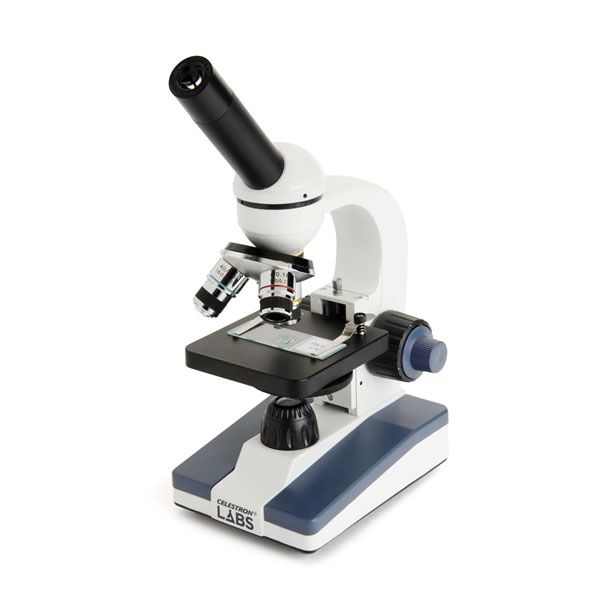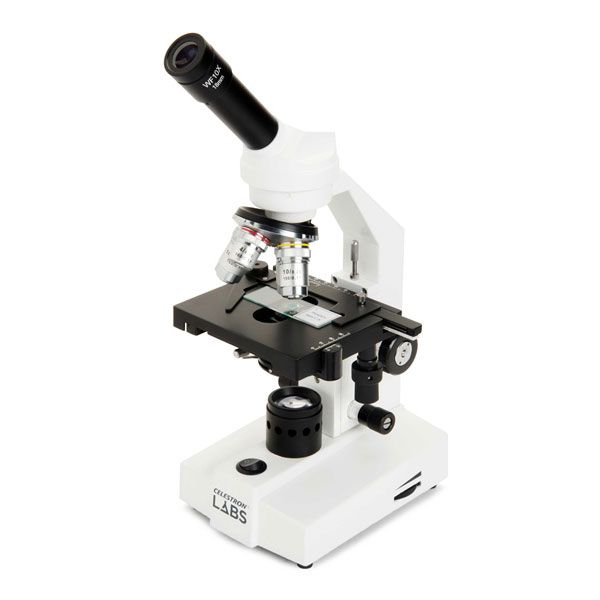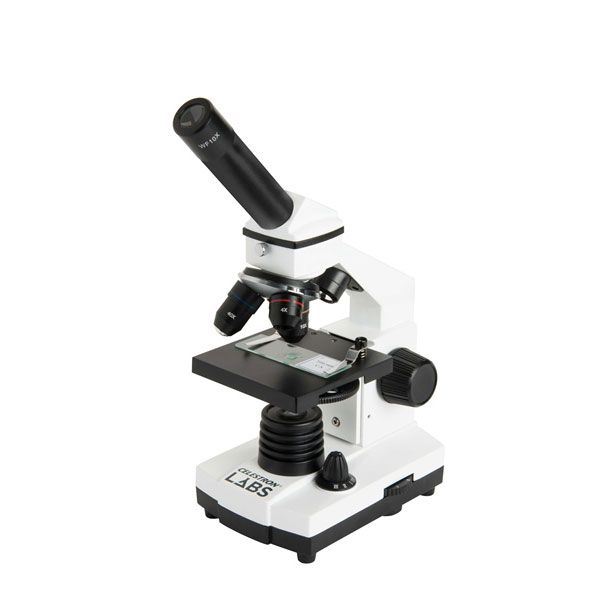Monocular optical microscopes provide excellent magnification for detailed examination of biological and material samples. Their single eyepiece design ensures user-friendly operation, making them suitable for both students and professionals. Similarly, the Sky-Watcher Heliostar 76Ha Solar Telescope offers sharp, high-contrast images, ideal for solar observation and research, enhancing scientific exploration and education.
Highlighted Products
Featured Product 1
The Celestron CM1000C Monocular Compound Microscope offers powerful magnification with a 10x eyepiece and up to 1000x magnification for detailed biological and educational studies. Its robust build and adjustable LED illumination ensure consistent, high-quality imaging. Designed for precision, it delivers sharp, clear views, providing reliable performance for various microscopy applications.
Featured Product 2
The Celestron CM2000CF Monocular Compound Microscope provides up to 2000x magnification, delivering sharp, high-contrast images for detailed biological and scientific analysis. Equipped with fully coated glass optics and adjustable halogen illumination, it ensures clear, precise viewing. Its durable construction makes it well-suited for rigorous use in laboratories and educational environments.
Featured Product 3
The Celestron CM800 Monocular Compound Microscope offers up to 800x magnification, providing clear, detailed images for biological and scientific exploration. Its fully coated glass optics enhance image quality, while the adjustable LED illumination ensures optimal lighting for precise observations. The sturdy construction and versatile design make it suitable for use in classrooms, laboratories, and home studies.
More About This Category
Monocular optical microscopes are generally employed to view small, thin specimens that light can pass through, such as biological slides. They are perfect for novices because of their simplicity and reduced cost relative to binocular or trinocular microscopes. These microscopes enable students in learning environments to study cell architecture, microbes, and other minute features unseen to the unaided eye. They are routinely used in clinical labs for tissue sample examination, pathogen identification, and blood analysis.
Monocular microscopes can be helpful in specific fields of astronomical study. For instance, they can be utilized to study cosmic dust particles gathered from space missions or meteorite samples. By enabling astronomers and planetary scientists to examine the minute details of extraterrestrial materials, these microscopes help clarify celestial bodies' composition and past. Monocular microscopes also allow the creation and examination of micro-thin sections of rocks and minerals, offering information on the geology of other planets and moons.
With ten x and twenty x eyepieces and objective lenses, the Celestron CM2000CF Monocular Microscope is a medium-level research tool offering eight levels of magnification from 40x to 2000x. Its all-metal design, completely movable mechanical stage, and three color filters for better image quality define it. The microscope includes ten prepared slides and an NA 1.25 Abbe condenser with an iris diaphragm. It fits labs, classrooms, and scientific inquiry.
With high-quality materials and a magnificence of up to 1000X, the Celestron Labs CM1000C Compound Microscope is a precise optical tool. It has three objective lenses, a 360º rotatable monocular head with a 45º incline, and 10X and 25X interchangeable eyepieces. The microscope includes ten specimen slides and adjustable lower LED lighting for natural colors. Three AA batteries or a universal AC adaptor drive the microscope.
The Celestron Labs CM800 Compound Microscope allows users to explore the inner world of objects with magnitudes as high as 800X. Its two replaceable eyepieces, monocular head with a 45º tilt, and three superior glass objective lenses set it out. The microscope features adjustable LED lighting, a 3.5" x 3.5" stage with two strong clips, and a simple focus knob.
What do and don't do when utilizing monocular optical microscopes?
Do’s
- Start with the lowest magnification for specimen identification and gradually increase magnification. When using oil immersion objectives, use immersion oil, typically 100x, for improved resolution.
- To avoid damaging slides or objective lenses, adjust focus slowly using coarse and fine knobs and cover the microscope with a dust cover when not in use.
Don't's
- Avoid using the coarse focus knob when viewing high magnification lenses to avoid object collision, and avoid touching lenses with fingers to prevent damage to optical coatings.
- Do not force the knobs or components; this can cause mechanical damage to the microscope.
- Never store the microscope in a humid environment. This can lead to mold growth on optical components and mechanical parts. Do not leave immersion oil on the objective lenses after use, as it can harden and damage them over time.
The mechanical parts—including the focusing knobs—should be frequently checked to ensure they are running without faults. Should you find any stiffness or unusual resistance, you may have to lubricate the moving components with a particular lubricant designed for microscopes. Moreover, the microscope has to be routinely calibrated to ensure appropriate magnification levels, usually based on frequency of usage or numerous users. See manufacturer instructions or professional maintenance services if the microscope breaks to prevent more damage.


